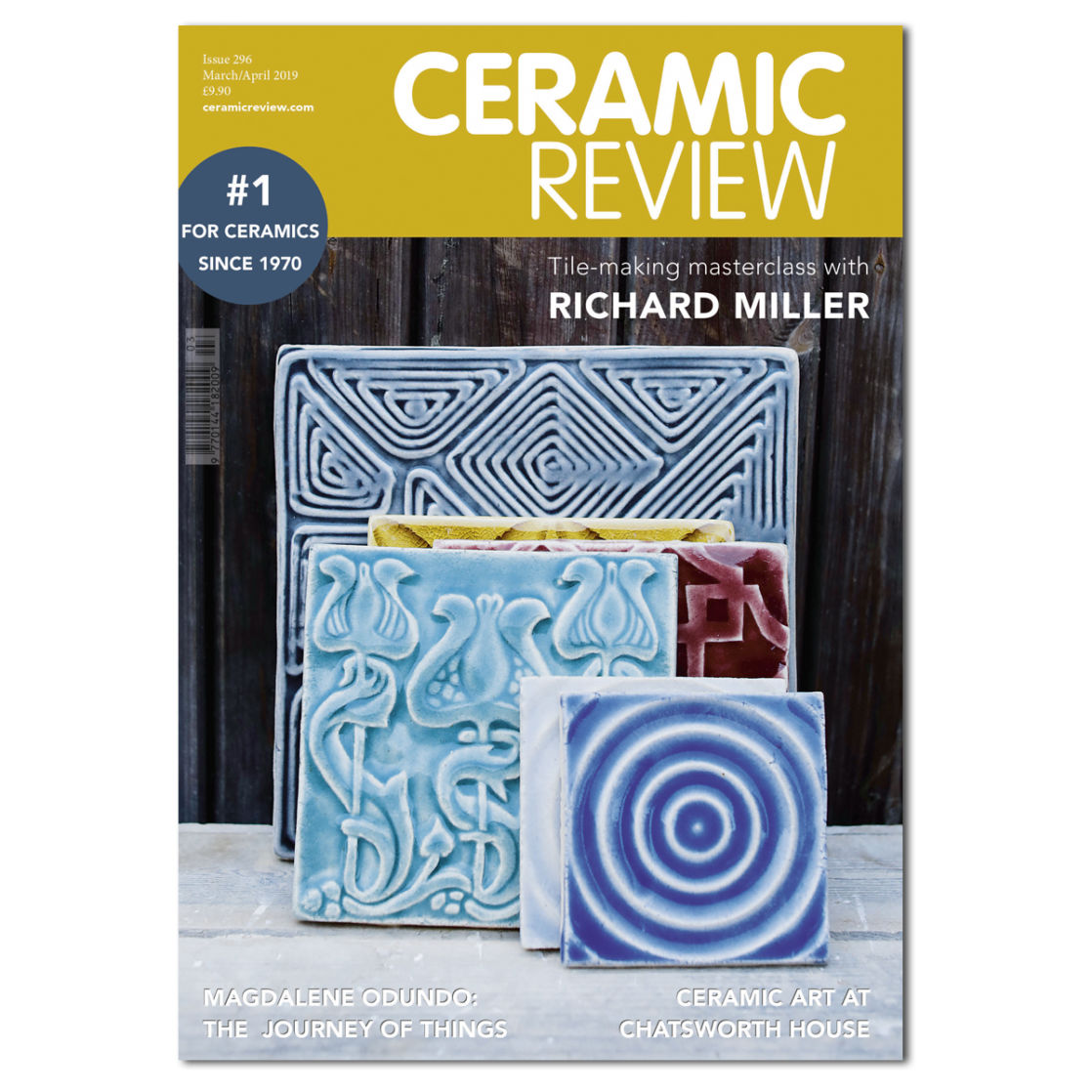Welcome to Ceramic Review
Ceramic Review is the magazine for contemporary and historical ceramics, ceramic art and pottery.
Ceramic Review Issue 334
July/August 2025
Ceramic Review is the magazine for contemporary and historical ceramics, ceramic art and pottery.
July/August 2025
Emerging potter Charlie Collier makes traditional domestic ware inspired by wood-fired pottery and his apprenticeship as a production flowerpot thrower. Here he discusses the impact these influences have had on his work and making process.
I make domestic ware, pots for use – beautiful everyday objects that I hope enhance some of our daily rituals. I predominantly make gas-fired stoneware, thrown using Cornish clay, with local slips, wood ash glazes, and a few bespoke Oriental-type glazes. I try to keep it simple and make what I think looks and feels right. I aim for the qualities I seek in other people – warmth, generosity and, most importantly, life. It’s an art form: just as much about feel, as it is form and function.
A turning point comes when you no longer struggle over how to make a pot, only what pot to make
I describe myself as a potter. I’ve been training as a production flowerpot thrower for the past five years with Whichford Pottery in Warwickshire. I think it’s important to learn traditional skills, especially for someone who wants to produce domestic ware – the balance of speed, efficiency and quality is a never-ending challenge. Deft, quality touches are required in order to transmit life and energy from the pot to the user. There are millions of dull pots being produced by mass production everyday, and we already have enough stuff in this world! It reminds me of the insight of Danish potter Anne-Mette Hjortshøj: ‘Pay honest attention to what you put in the kiln.’ Having an eye for form is in my opinion just as important as having the manual skills to fluently make whatever it is you choose. Part of it is understandably down to the tastes of the individual and whatever ‘hits the spot’ for them. But I believe there is an underlying sense of proportion in all of us – a sense that I’ve found is enhanced by studying the subtle differences in the walls and profiles of pots. Form, as Cardew put it, and the ‘majesty of form’, is what it is all about: ‘Form is emptiness, the very emptiness is form.’
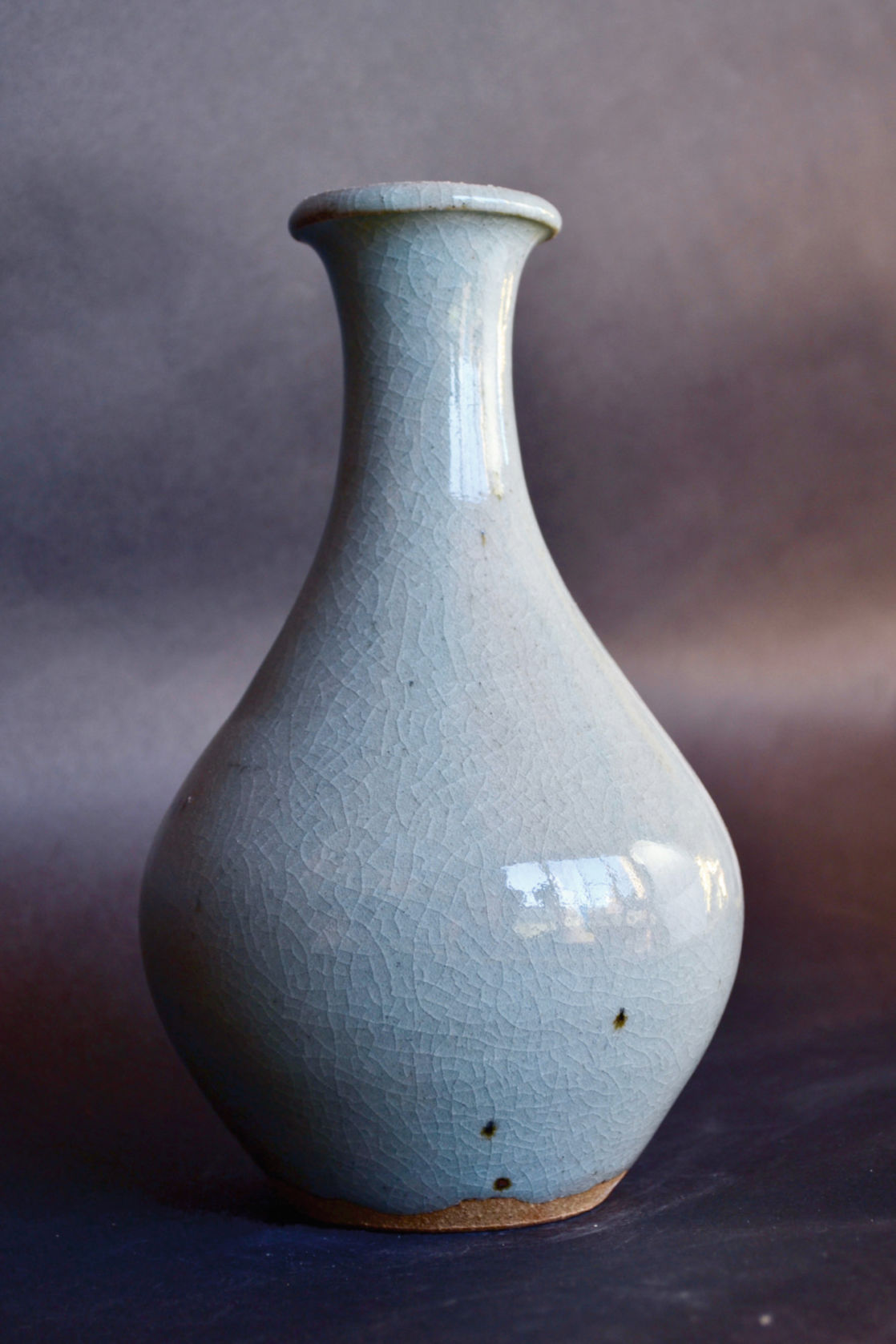
Charlie Collier, Celadon Vase
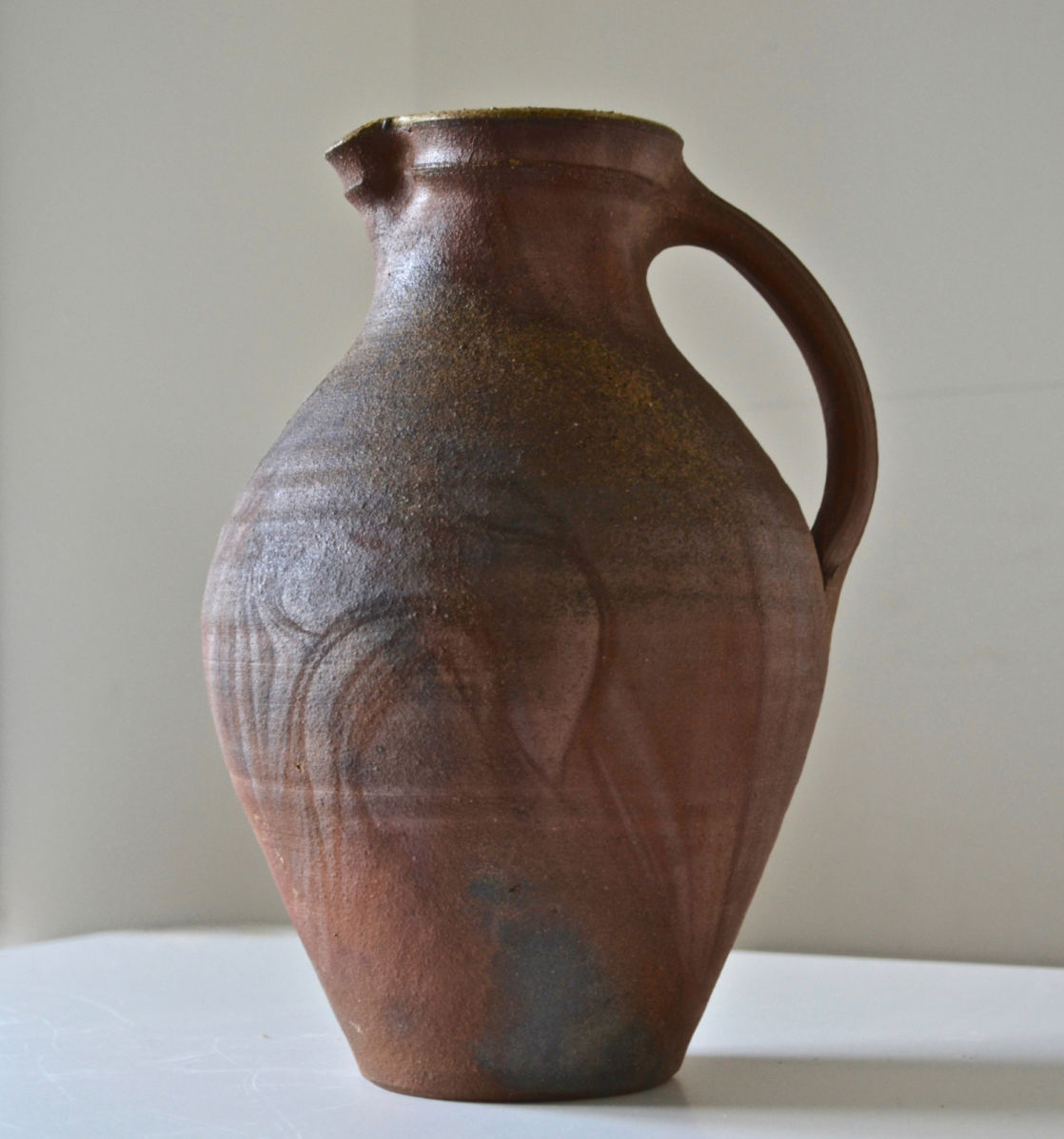
Charlie Collier, Anagama Jug
I want to uphold the standard of traditional handmaking skills that exist in the few remaining production potteries in the UK. I’m an advocate of hands-on apprenticeships, especially for throwing – there is no substitute for throwing thousands of pots. To be at ease and have confidence with your materials is empowering for your creativity. A turning point comes when you no longer struggle over how to make a pot, only what pot to make. The automatic feel of throwing is very endearing to me – the autopilot movements that your hands make, almost like a dance, when every move flows to the next until the whole board or trolley is full. It’s a unique headspace to enter, and one I doubt I’ll ever tire of.
Working as a production thrower at Whichford Pottery has certainly influenced my own work. It has given me confidence, speed and efficiency with clay. You build an intimate knowledge of the movement of the material on the wheel, its limits and its potentials. As an apprentice, you gain an understanding of the whole process, from start to finish, and all the technical knowledge that goes with it. Aside from the making aspect, it has also highlighted to me the importance of good workshop practice and organisation. Perhaps most importantly, it has made me realise how much more fun it is to work in a team – community is important; we are a tribal species after all.
I throw using Cornish stoneware and carry out the whole process by hand. I knead the clay, test, develop and mix the glazes, and collect, source and prepare all the raw materials. I believe being involved and experimenting on this level will naturally give the work vitality. Pots offer that direct link between the maker’s hand and the user. I gas and wood fire to stoneware cone 10. I have a gas kiln at home, which I use for the bulk of my production, and I’m able to wood fire a small selection of pots every year as part of the Oxford Anagama project. I’ve learnt a lot from the Oxford kilns, and the Bizen potters on the team – the shared skills and experiences have been invaluable.
I had an initial fascination with wood ash, its use in stoneware glazes and the fly ash seen on wood-fired pots. Years ago at Oxford Ceramics Fair, I saw a photo of Tim Hurn standing in his anagama kiln, surveying a sea of pots and stacks of wood. It all seemed so very elemental and natural, which appealed to me. I saw stoneware as a challenge, a learning curve to satisfy my intrigue. I didn’t have to think too much – it was a thirst that needed to be quenched. I have an equal love for slipware: our home traditions of pottery, all the way back to those glorious English medieval pitchers. I shall never tire of roaming the fifth floor of the V&A, gasping at the great heritage of pottery from across the ages and every corner of the globe.
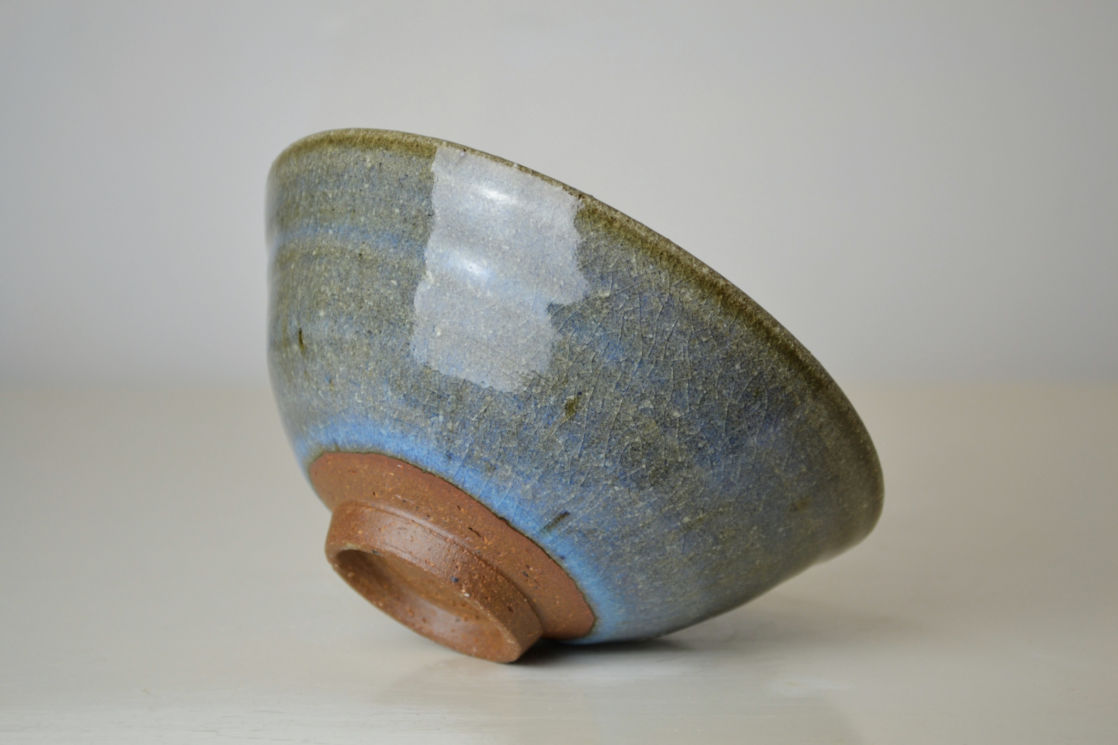
Charlie Collier, Chun bowl
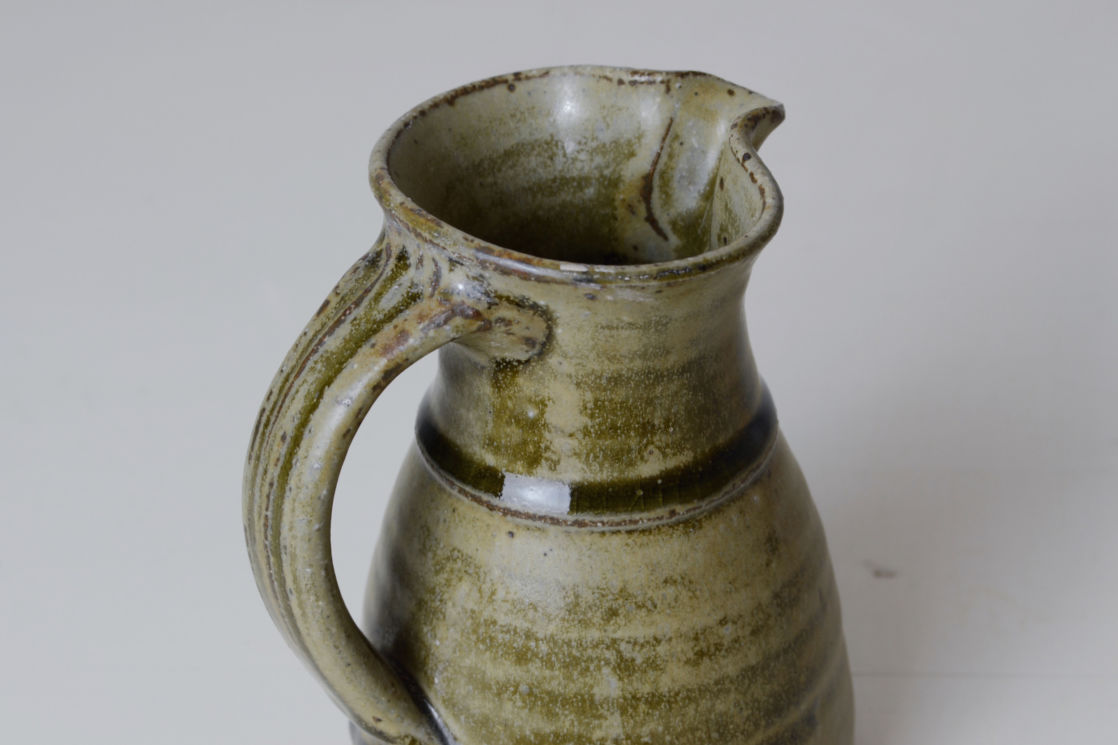
Charlie Collier, Ash jug
Having an eye for form is in my opinion just as important as having the manual skills to fluently make whatever it is you choose.
The apprenticeship at Whichford has been fundamental to my career so far. Its founder Jim Keeling has been a constant source of inspiration and encouragement, and I hold him and the whole team there in very high regard. The encouragement from makers and people within the pottery community to come and get involved with firings, shows and workshop visits has been truly humbling. Experiences such as firing with Svend Bayer, Tim Hurn, and the Oxford Anagama kilns over the past few years have really struck a chord with me. Working with Mike Dodd last autumn was certainly a highlight, too.
In future the I would like to travel – the notion of ‘journeyman’ training really appeals to me. Visiting other potteries and makers with the aim of returning home with new skills and influences would be a wonderful opportunity. I want to keep making pots, especially big pots, and to continue with stoneware. Although returning to my English terracotta roots in future is perhaps inevitable – I can’t avoid making slipware forever! I hope to set up my own pottery and build a wood kiln one day. I would also like to teach and have my own apprentices, so that I can pass on the skills I’ve been lucky enough to gain and help to grow the the skill base of the craft in this country.
Learn more at etsy.com/uk/shop/CharlieCollierShop This article is taken from Ceramic Review Issue 296 (March/April 2019) , For more subscribe below.
